Tolkien Group (engl./ fr.)
Crassula ovata Tolkien Group
Origin:
A mutation from the species Crassula ovata, arising in cultivation prior to 1980 and changing randomly since then. It has been said to be a hybrid with Crassula lactea, but that is very unlikely. The cause is most likely to be a mycoplasma, which are immobile bacteria with no cell walls, causing a mutation of normal Crassula ovata.
Description:
Leaves cylindrical, terete or variously flattened, a result of leaves inrolling and fusing together. Leaf-tips more or less sunk at the tip in the form of an elliptic, mostly oblique umbilicus, or with a lenticular dimple just below the tip. Usually of a lively strong glossy green, or more rarely bright red, mainly at the tips or margins. Smaller than the normal species and seldom rising to more than about 30cm in height. Prone to producing frequent reversions to normal stems.
Etymology:
The first two cultivars comprising this Group were named after characters in the Tolkien Legendarium. The fictitious characters of J. R. R. Tolkien's series of children's high fantasy books, the first of which was published in 1937 entitled The hobbit, the best-seller 3-volume Lord of the rings trilogy (1954-55), and collectively known as Tolkien's Legendarium, have now given their names to the earliest two selections within this Group.
'Hobbit' appears to have been the earliest name to have received a description, in the Abbey Garden Cacti & Succulents Catalogue (1979), as Crassula portulacea 'Hobit' [this mis-spelling is a correctable unintentional error for 'Hobbit']. There is a description but no illustration (nor in later catalogues). Here the leaves are rolled back at all edges to form a slightly flattened cylinder and there is a lens-shaped dimple just below most leaf tips is the only free part that remains. According to Tolkien, a hobbit is a 'hole-dweller'.
See also Roy Mottram : Crassula ovata Tolkien Group
---------------------------------------------------------------------------------------
Origine :
Une mutation de l'espèce Crassula ovata, apparue en culture avant 1980 et ayant depuis changé aléatoirement. On a dit qu'il s'agissait d'un hybride avec Crassula lactea, mais c'est peu plausible. La cause la plus probable en serait un Mycoplasma, bactérie immobile dépourvue de paroi cellulaire, qui aurait fait muter la Crassula ovata normale.
Description:
Feuilles cylindriques, arrondies ou différemment aplaties : résultat de feuilles s'enroulant et fusionnant ensemble. Le bout de la feuille est plus ou moins enfoncé, de forme elliptique, comme un nombril oblique, ou avec une sorte de fossette en dessous de ce bout. D'un vert brillant, ou plus rarement d'un rouge vif (principalement au bout et sur la marge). Plante plus petite que l'espèce normale, et atteignant rarement plus de 30 cm de haut. Susceptible de produire des tiges revenues à la normale.
Etymologie :
Les deux premiers cultivars de ce groupe furent nommés d'après les personnages du légendaire de Tolkien . Ces personnages fictifs sont tirés de la série d'ouvrages fantastiques pour enfants de J. R. R. Tolkien, dont le premier fut publié en 1937 et intitulé Le Hobbit, avant la trilogie du Seigneur des Anneaux (1954-55).
'Hobbit' semble avoir été le premier nom à recevoir une description, dans Abbey Garden Cacti & Succulents Catalogue (1979), en tant que Crassula portulacea 'Hobit' (cette faute d'orthographe involontaire a été corrigée depuis en 'Hobbit'). Il y a une description mais pas d'illustration, ni dans les catalogues suivants. Chez 'Hobbit', la marge des feuilles s'enroule par-dessous pour former un cylindre légèrement aplati, et il y a un creux en forme de lentille juste au-dessous du bout de la plupart des feuilles. Selon Tolkien, un Hobbit vit dans un trou.
Voir aussi Roy Mottram : Crassula ovata Tolkien Group
--------------------------------------------------------------------------------------
'Gollum' first appeared in print in the Grigsby Nursery Wish Book (1981). There is a description but no illustration in that particular catalogue, but one does appear in the 1982 edition. That is the largest, most vigorous and commonly seen form where the leaf tips are highly modified and deeply umbilicate.
'Gollum' apparut d'abord dans la publication Grigsby Nursery Wish Book (1981). Dans ce catalogue, l'on n'y trouve qu'une description ; l'illustration fut publiée dans l'édition de 1982. C'est la plus grande forme, la plus vigoureuse et la plus rencontrée, et celle dont le bout de la feuille est le plus modifié et profondément ombiliqué.
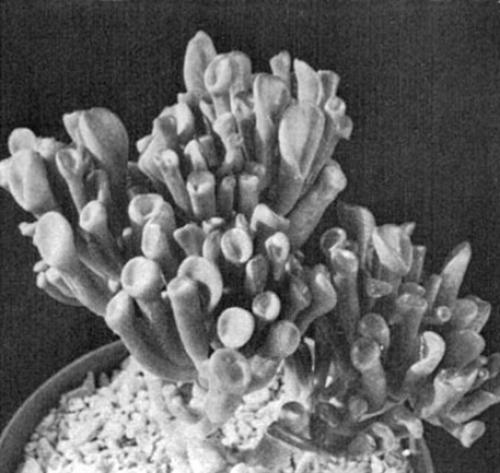
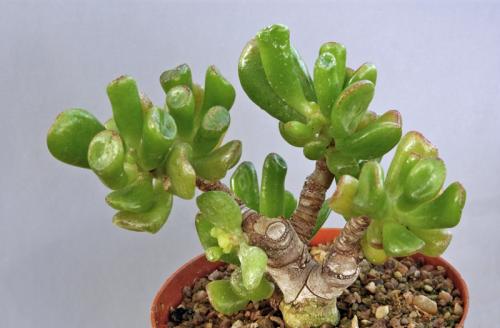
A typical Tolkien Group plant with a variety of leaf shapes, probably 'Gollum'. Leaves up to 3.5cm. long & 1.8cm. broad.
Photo Roy Mottram
'Gollum' :
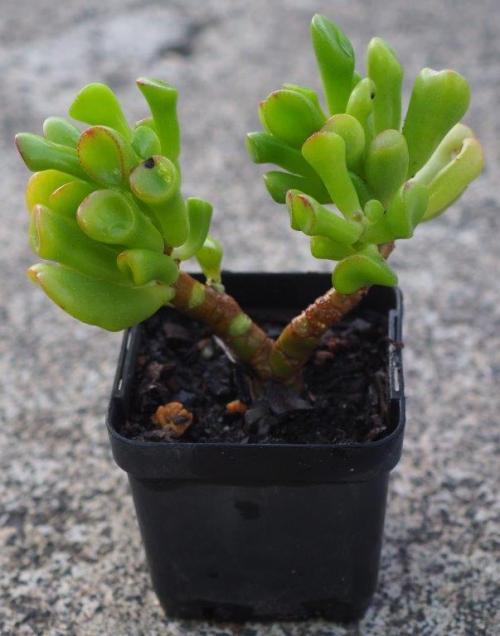
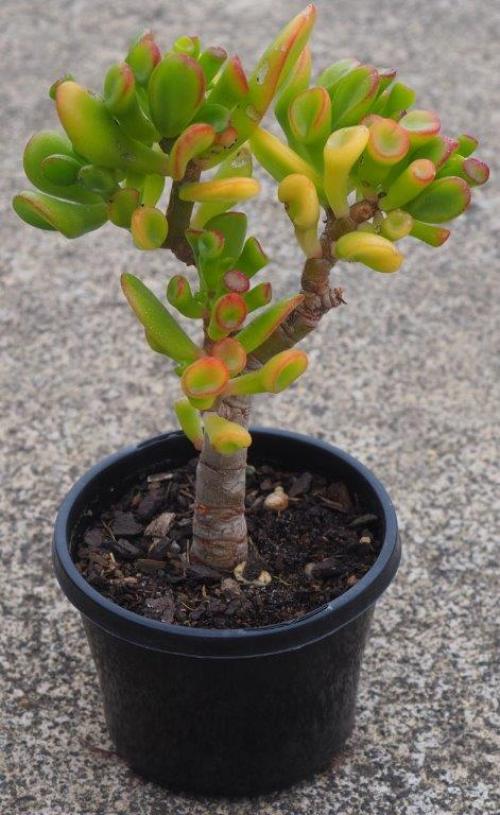
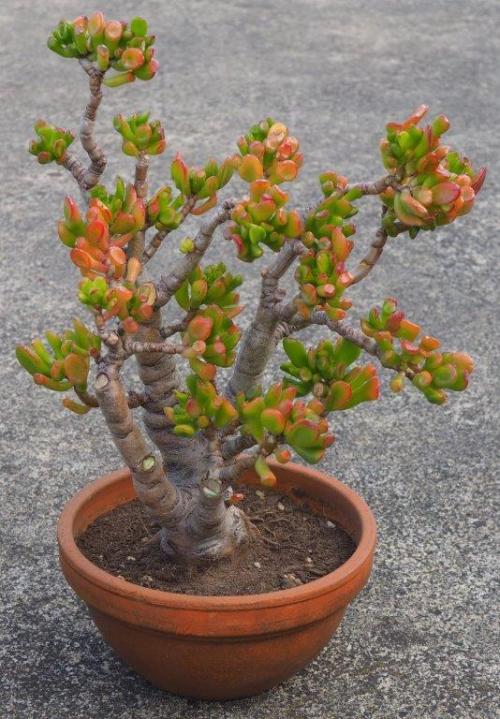
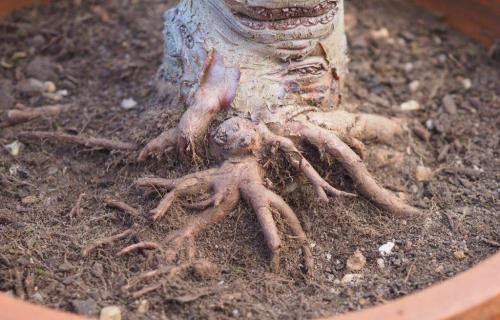
A very old plant :
.jpg)
Stem diameter 9.5 and 5 cm :
.jpg)
A pachycaul ‘Gollum’ :
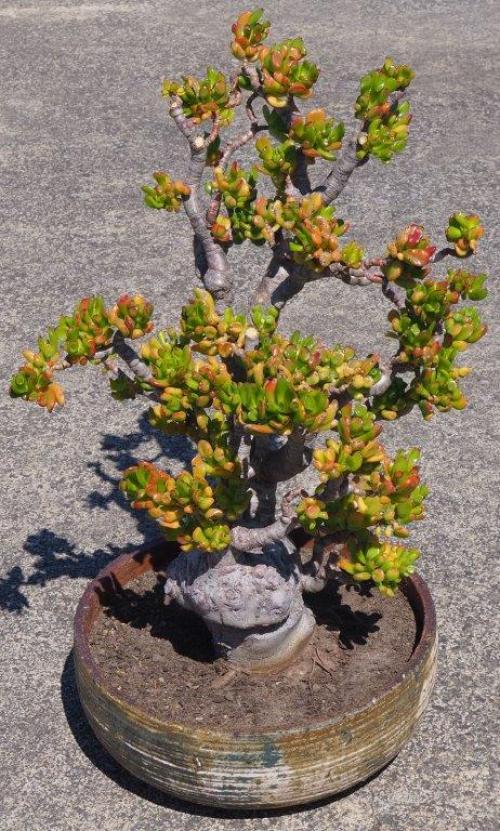
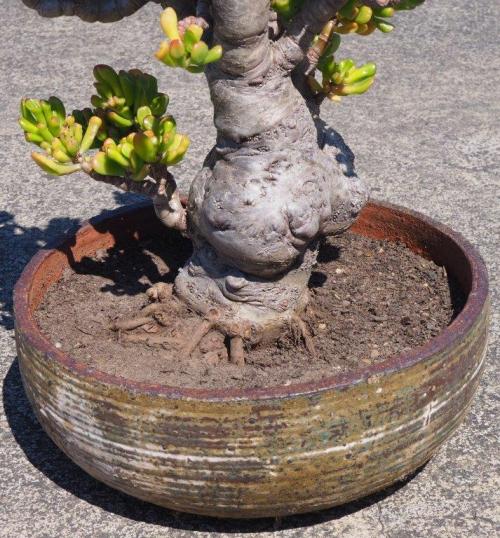
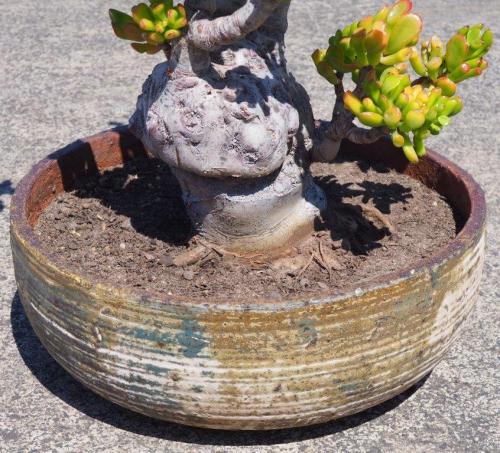
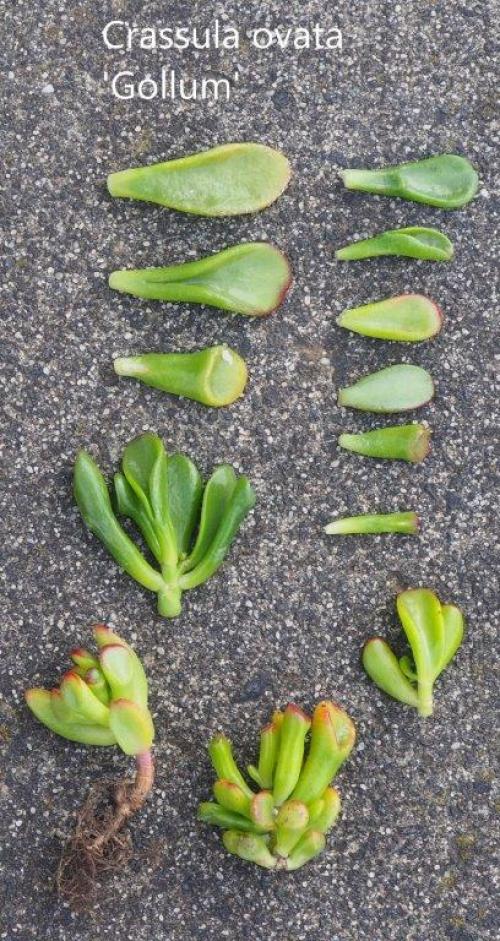
Photos Santino Rischitelli
'Gollum' in flower :
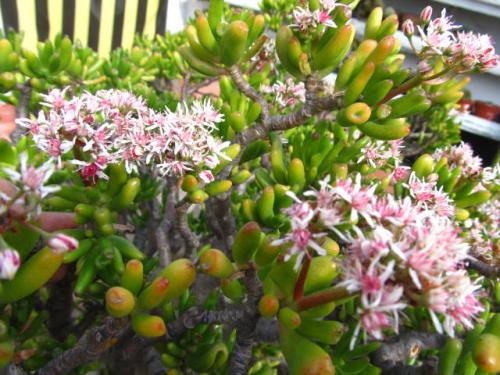
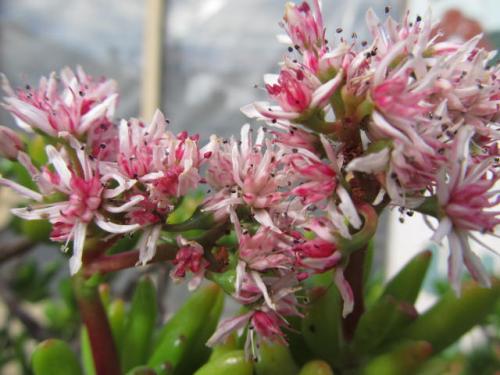
Photos Julio C. Garcia
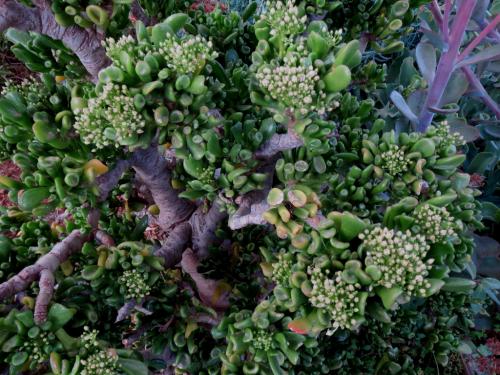
Photo Noelene Tomlinson
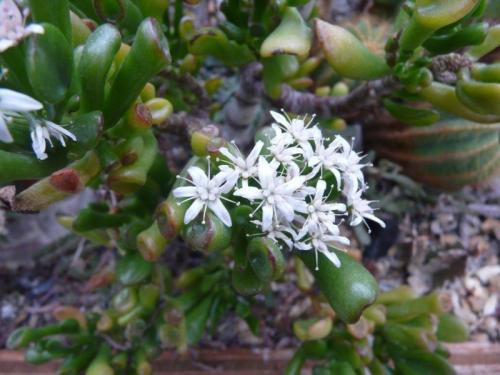
Photo Margrit Bischofberger
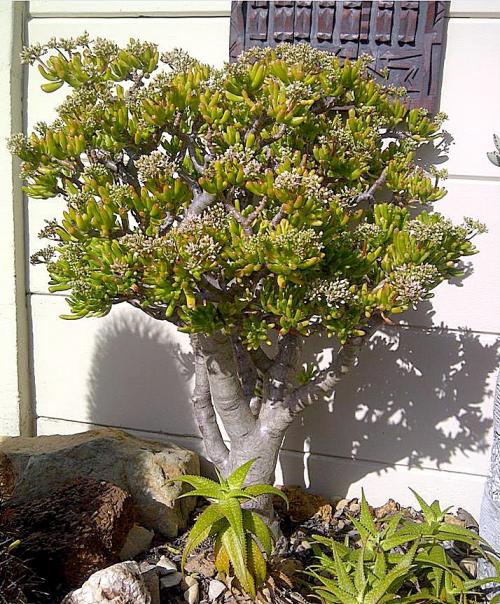
Kobus Maritz collection
Photo Paul J. Green
Crassula ovata ‘Hobbit’ - aka C. ovata ‘Horn Tree’ :
Different leaf colours and size of leaves of C. ovata ‘Hobbit’ are the result of growing conditions : Exposure to the sun, seasons, soil, size of pots and no or frequent repotting.
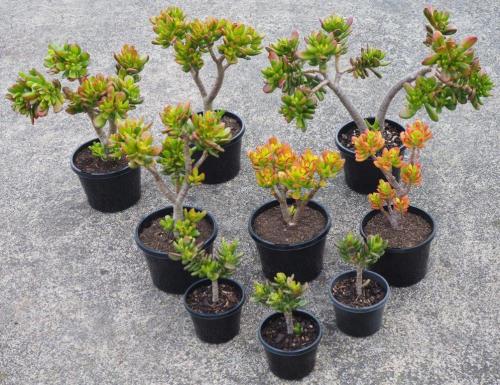
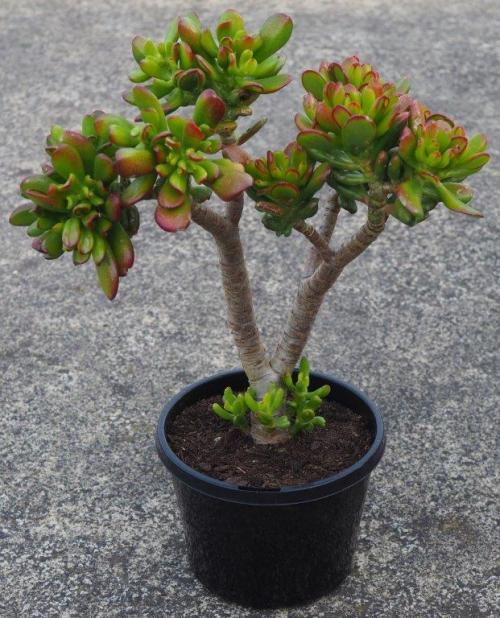
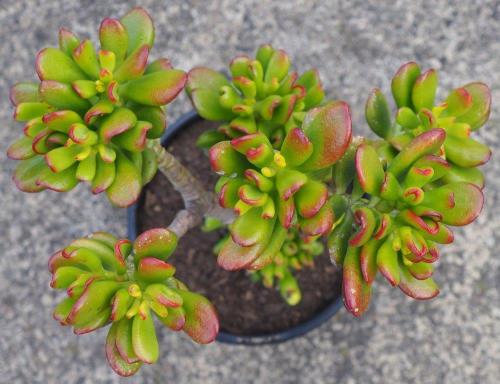
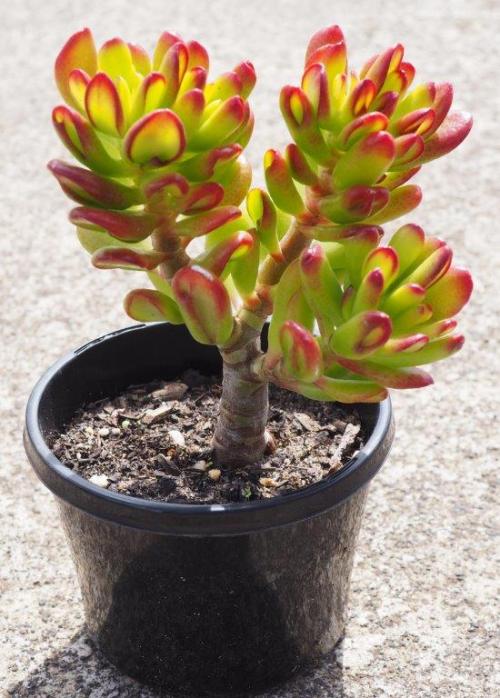
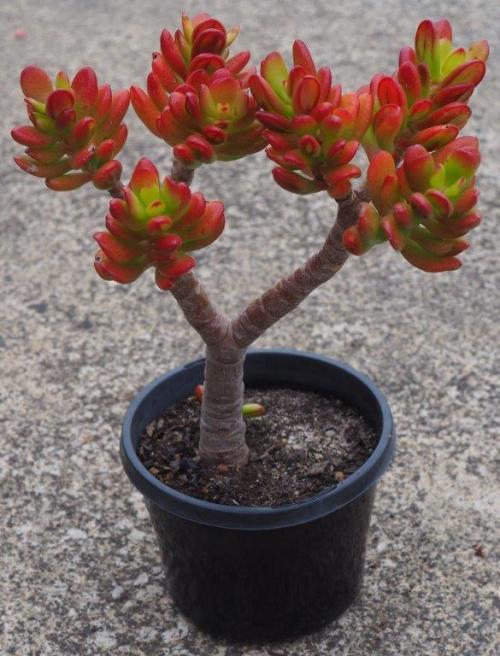
.jpg)

Photos Santino Rischitelli
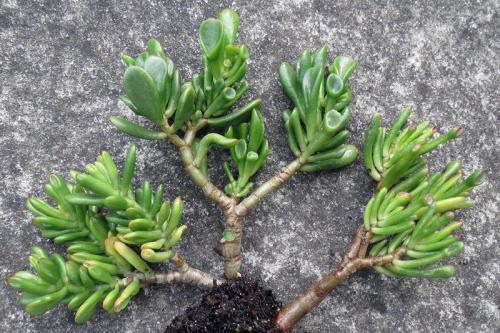
Photo: Noelene Tomlinson
C. ovata 'Hobbit' in flower :
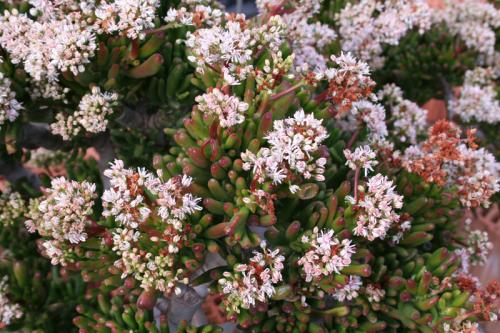
Crassula ovata 'Ladyfingers' :
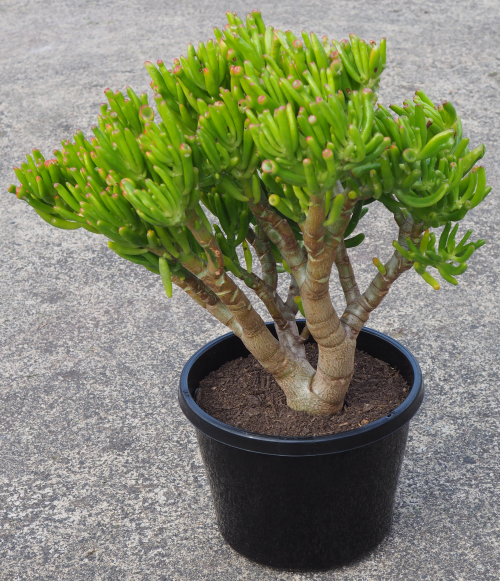
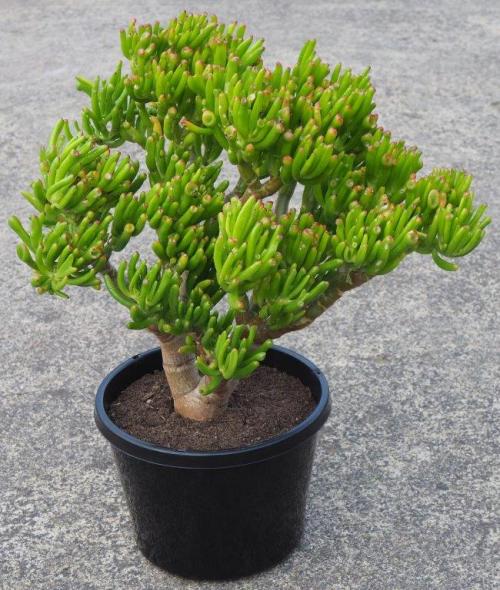
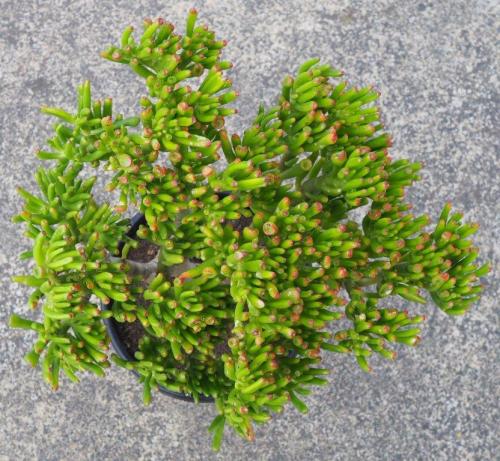
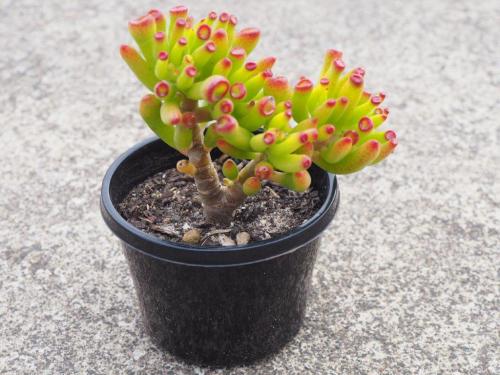
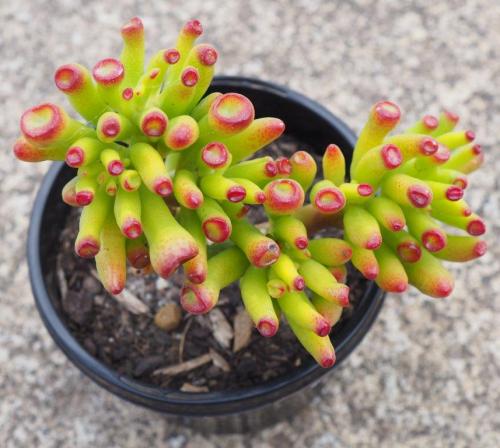
.jpg)
.jpg)
A very old plant :
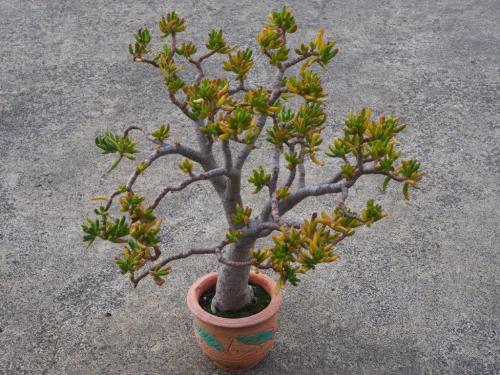
Photos Santino Rischitelli
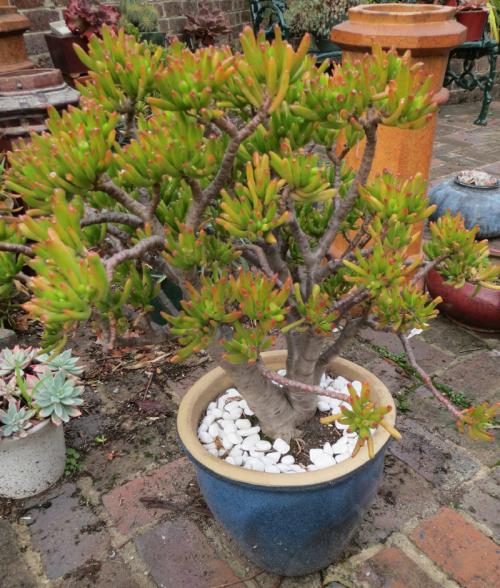
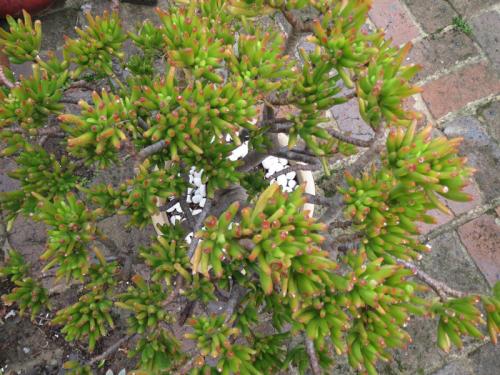
Photos Noelene Tomlinson
The leaves of C. ovata ‘Ladyfingers’ are a thinner version of those of C. ovata ‘Gollum’ :
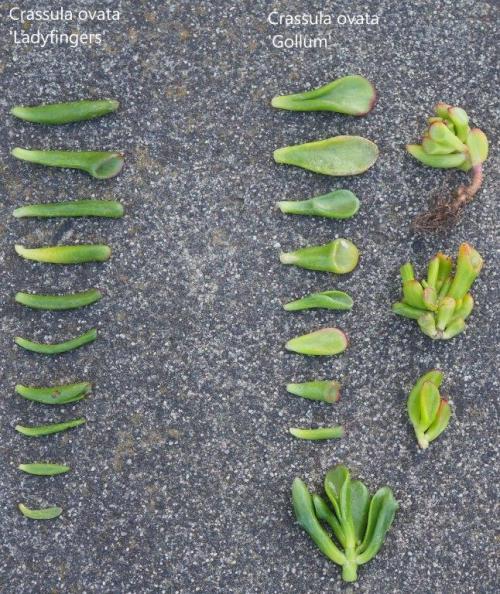
Photo Santino Rischitelli
Crassula ovata ‘Red Coral’ in Australia - aka C. ovata ‘Red Horn Tree’ - a mutation of C. ovata ‘Hummel’s Sunset':
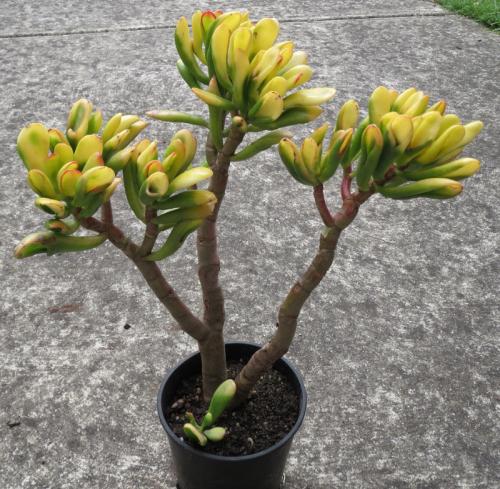
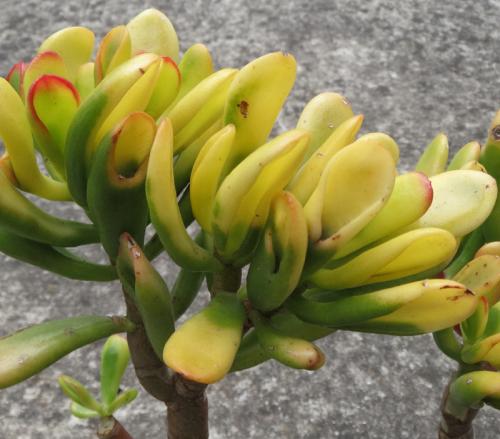
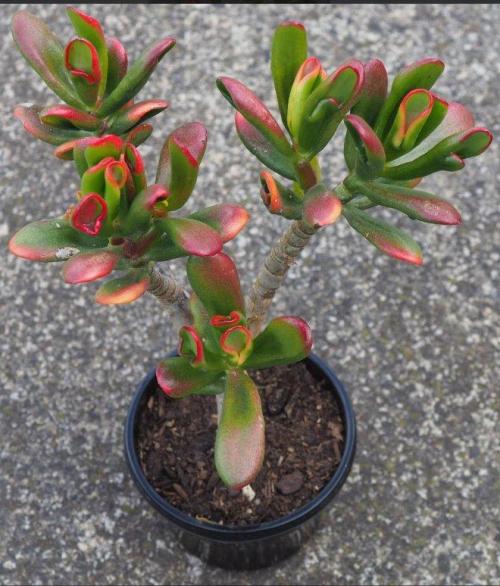
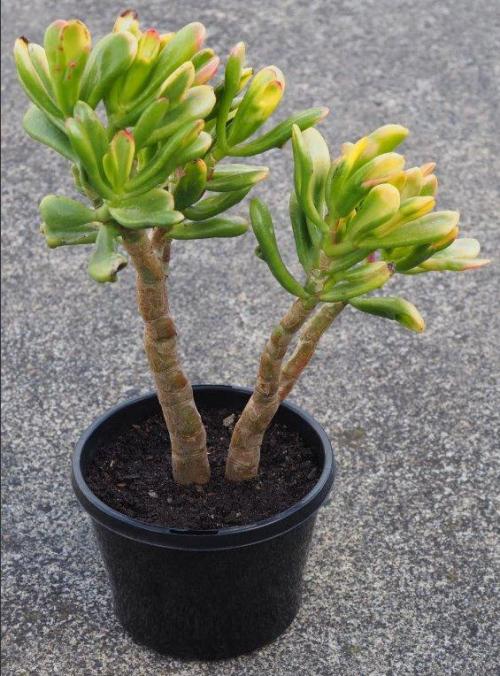
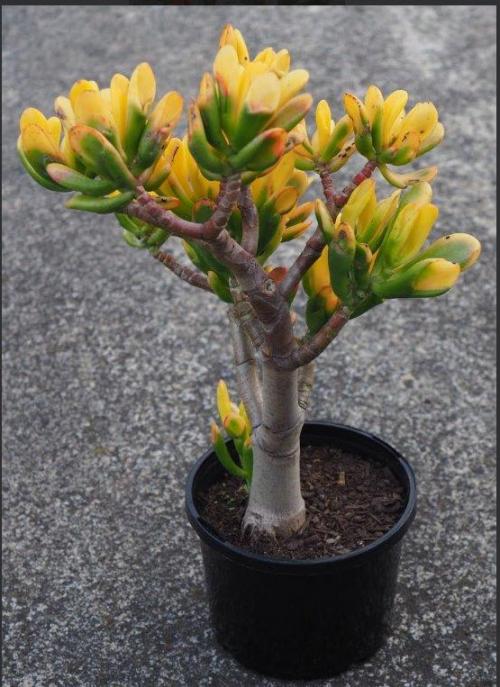
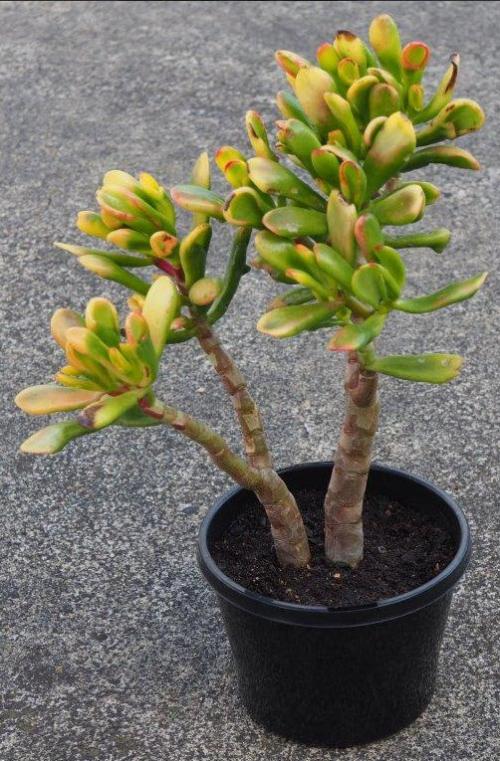
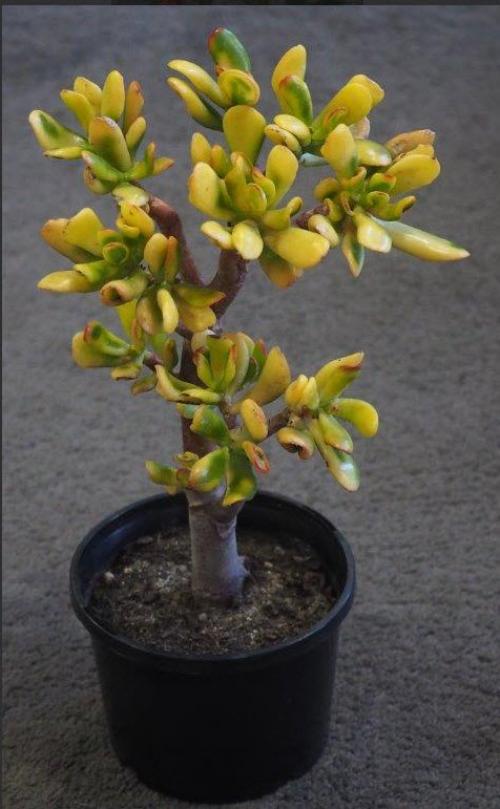
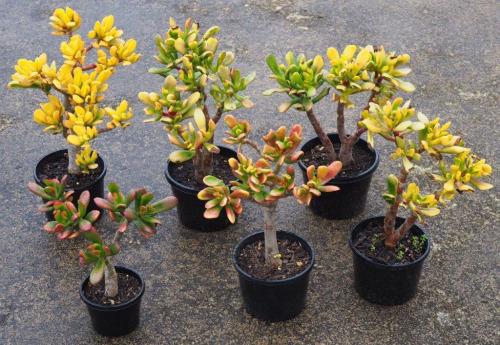
Left full sun, middle morning sun, right under shade cloth :
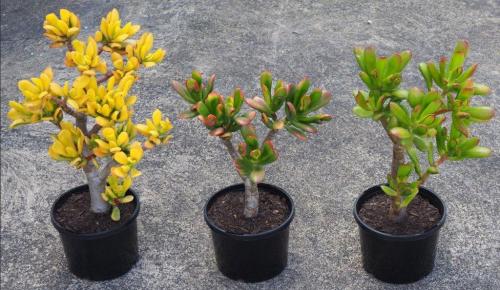
The leaves of C. ovata ‘Red Coral’ are similar to those of C. ovata 'Hobbit, however differ from the latter in being much more colourful as the preceding photos show :
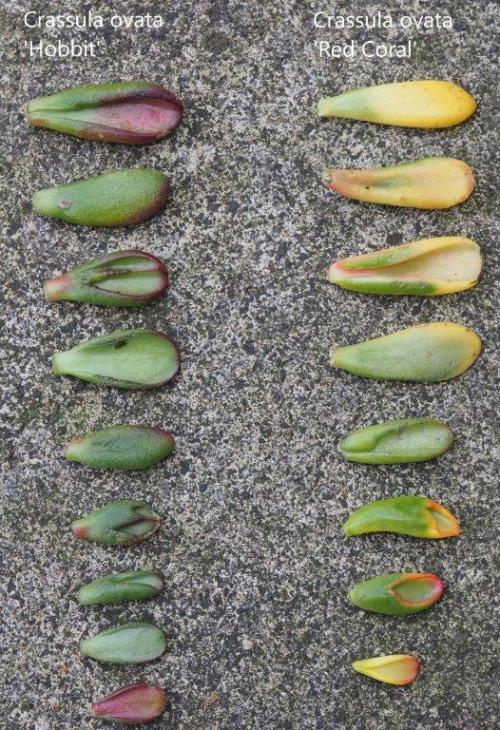
C. ovata ‘Red Coral’ : 1 branch reverting to C. ovata ‘Hummel’s Sunset' :This suggests that C. ovata ‘Red Coral’ is a monstrous form of C. ovata ‘Hummel’s Sunset' :
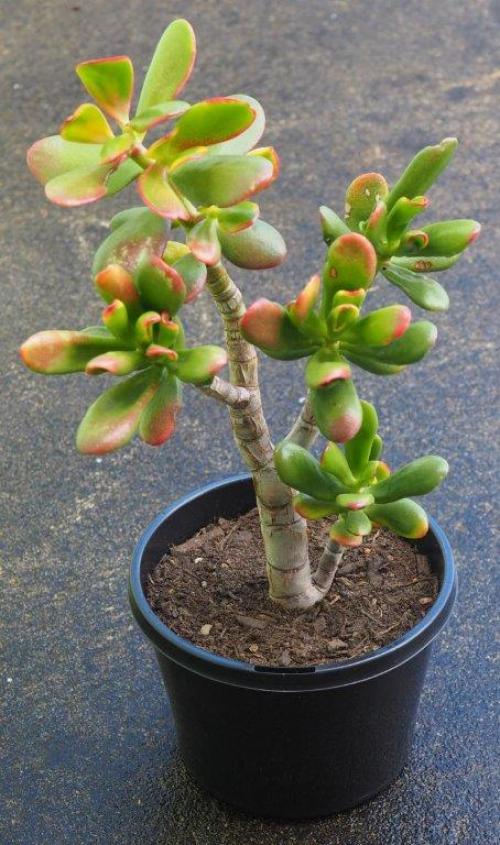
C. ovata ‘Hummel’s Sunset' :
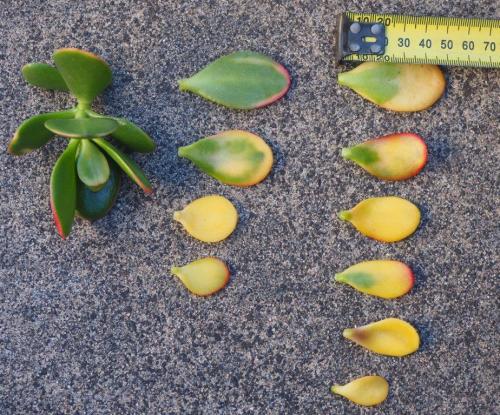
Leaf shapes of members of the C. ovata ‘Tolkien Group’ :
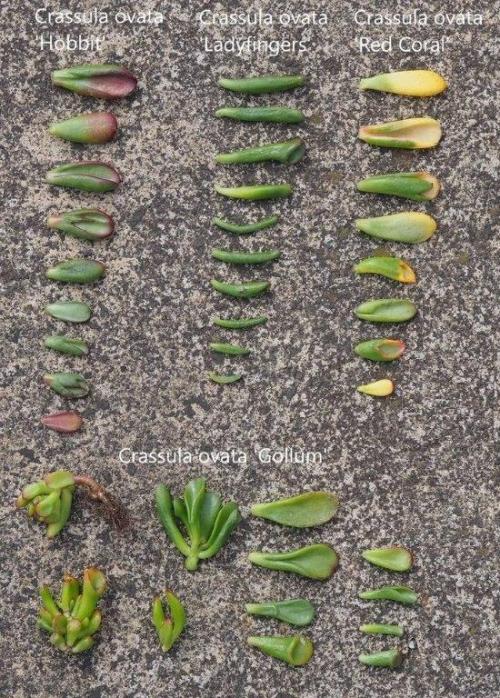
Photos Santino Rischitelli